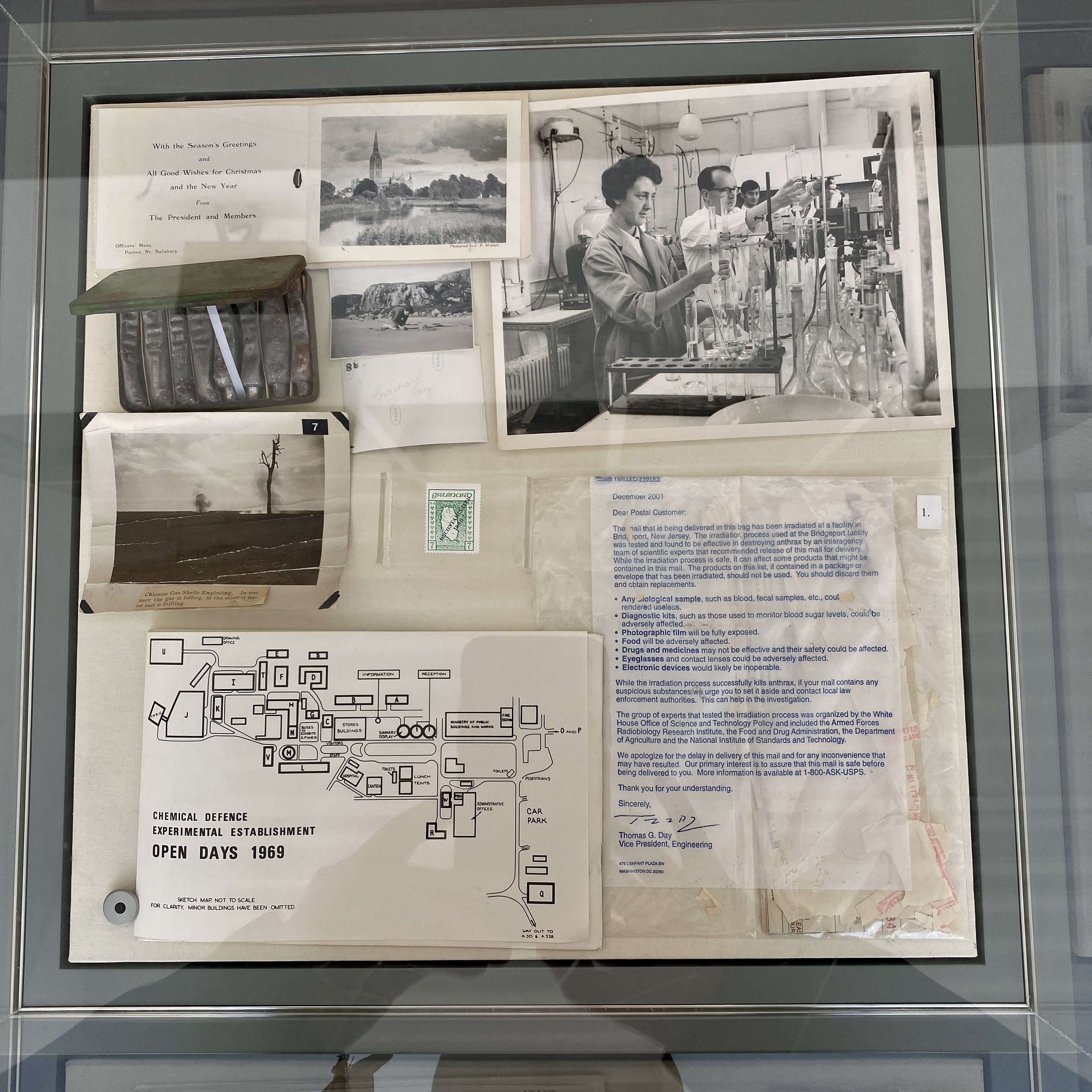Cabinet Contents
Cabinet Object List
1. Christmas card from Porton Down, Officers Mess. The British militaries chief scientific complex
2. Associated Press image of inside one of the laboratories in Porton Down, 1968.
3. Anti-Gas ointment. Found in a wall cavity of a former Forward Filling Depot (FFD) Lords Bridge, Cambridgeshire.
4. Photograph of the second Battle of Ypres. Chlorine shell exploding, 1915.
5. Photograph obtained on E-bay, showing a man in Gruinard Bay, c.1955.
6. Cinderella stamp commemorating the decontamination of Gruinard Island 1990.
7.Open day programme for Porton Down 1969. The British militaries chief scientific complex
8. Irradiated letter from New Jersey. Due to the terrorist attack of anthrax being put into the USA mailing system just after the 9/11 attack, 2001.
Entrance Section Audio Description
Link to purchase Project Cleansweep Book
Site-14
Gruinard Island, Scotland
Site-14
Gruinard Island, Scotland
Located one mile off Gruinard Bay, between Gairloch and Ullapool on the north west coast of Scotland, Gruinard Island was the site in 1942 of the first biological warfare test by British military scientists from Porton Down. Eighty sheep were taken to the island and bombs filled with anthrax spores were exploded close to where selected groups were tethered. The sheep either died during the test or were killed afterwards, as a precautionary measure. For many years, it was judged too hazardous for the public to access the island. In 1981, a group of activists known as Dark Harvest, an affiliate of the Scottish National Liberation Army, left a sealed package of a soil sample from the island outside the military research facility at Porton Down; tests revealed that it contained anthrax bacilli. Dark Harvest wanted to draw attention to the contamination of the island and the failure of the authorities to deal with the situation. A few days later, another sealed package of the soil was left in Blackpool, where the ruling Conservative Party was holding its annual conference. Starting in 1986, a determined effort was made by the authorities to decontaminate the island, with 280 tonnes of formaldehyde solution diluted in seawater sprayed over all 196 hectares of the island and the worst-contaminated topsoil around the dispersal site removed. On 24th April 1990, following 48 years of quarantine and four years after application of the formaldehyde solution, the island was declared safe for the public. Today the island remains uninhabited.
Display Case Contents

Site-04
Harpur Hill, Derbyshire
Site-04
Harpur Hill, Derbyshire
In 1940, Maintenance Unit No. 28 was the biggest chemical weapons reception and storage depot in the UK. Up to 46,000 individual chemical weapons were stored on the 200-hectare site and in the surrounding country lanes. Wholesale burning of chemical weapons took place there after the war. In 1960 the site was closed. Since then the underground tunnels there have been used to store cheese and alcohol and to grow mushrooms. The site also contains a toxic quarry lake, where weapons were tested. Known to locals as ‘The Blue Lagoon’, it is very alkaline, with many warning signs to deter people from swimming in it. Part of the site is occupied by the National Health and Safety Laboratory.